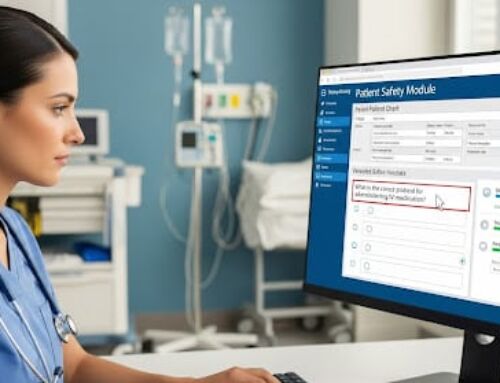
About 400,000 hospitalized patients annually experience harm that was preventable. A lack of consistent, up-to-date, efficient, and easy-to-follow hospital policies and procedures creates opportunities for a host of problems. From patient safety concerns to preventable medical errors, incidents that occur in hospitals and other clinical settings are often avoidable.
Despite years of implementing preventive measures to protect patients and improve practices, preventable errors occur more often. As of 2024, preventable medical errors alone have become the new silent epidemic, and one method that practice managers and compliance officers use to prevent this issue is by managing their policies and procedures with compliance software.
Hospital Policies and Procedures Define the Care You Provide
Hospital policies and procedures are comprehensive frameworks used to outline standardized operating protocols for healthcare facilities. While they provide structure for healthcare settings, they aren’t simply a list of rules. They are also a compiled guide used for expectation setting, common error and illness prevention, incident identification and hospital incident report policy, and accountability improvement.
Hospital policies can cover patient admission processes, medication administration, infection control, and discharge. The primary purpose of these policies is to create a consistent approach to healthcare delivery and quality care.
Medication administration policies, for example, specify the chain of care from who is authorized to administer medications and how dosages are calculated to the steps taken to properly verify patients and patient orders. Having procedures tailored to every department within a facility and for all work functions minimizes the risk of errors and provides a clear protocol all clinical staff can follow.
What Your Policies Should Aim to Achieve
Hospital policies and procedures are designed to achieve several key objectives to maintain effective operations and care. These policies should aim to accomplish two primary things:
- To guide a facility and all staff to accomplish outlined goals
- To ensure compliance with federal and state regulations
For example, facility and staff goals can include:
- Incident reports procedures
- Protocols for the prevention of adverse events
- Continuous improvement of patient safety protocols
- Staff continued education plans
- Protocols to reduce patient readmission
Well-defined policies enhance operational efficiency and reduce miscommunication among staff and patients. These simple advantages could save facilities billions in noncompliance fines, preventable malpractice suits, and avoidable reputational damages.
Consider Essential Policy Types for Your Facility
If a healthcare facility wants to focus on being results-driven and safety-oriented, it will need systems and policies in place that cater to those standards. From maintaining compliance with the Health Insurance Portability and Accountability Act, Occupational Safety and Health Administration, or even patient satisfaction, the right procedures will often place facilities ahead of others in comparison.
A few of the policies any healthcare facility should have can vary, but some of the most beneficial are policies focused on:
- Patient care
- Information and security
- Medication handling and distribution
- Infectious disease
- Ethics
Annual reviews and revisions are recommended to keep policies up to date.
Streamline Policy and Procedure Management With Compliance Software
Using compliance software enables the streamlining of hospital policies and procedures and controls policy life cycles. Software solutions keep facilities compliant and make self-management simple while also improving workflow and reducing preventable incidents.
Safer facilities are built on streamlined compliance management solutions, and you can learn how to start today.









